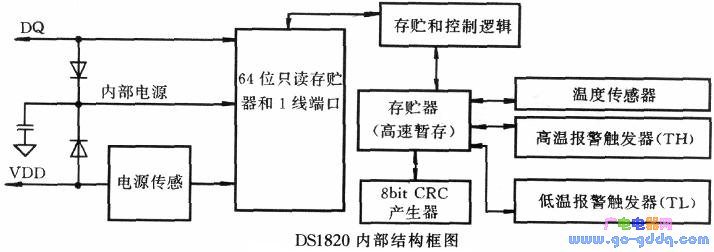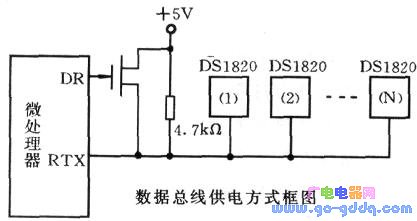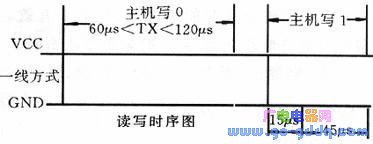The DS1820 is a one-wire digital thermometer developed by Dallas Semiconductor, known for its ability to represent temperature using a 9-bit digital value. It allows multiple DS1820 devices to be connected on a single data line, significantly reducing the number of I/O pins required from the microcontroller. This makes it ideal for applications where space and wiring are limited. The paper discusses the functionality, working principles, and practical applications of the DS1820.
1. Key Features of the DS1820
The DS1820 offers several notable features:
- Communication can be achieved with just a single I/O line.
- Multiple DS1820s can share the same data line for communication.
- No external components are needed for operation.
- It can be powered through the data line (parasitic power).
- Temperature range: -55°C to +125°C with an accuracy of ±0.5°C.
- Temperature is represented as a 9-bit digital value.
- Conversion time is 200ms per temperature reading.
- Supports alarm temperature settings for specific conditions.
- Available in PR35T and SSOP package types.
2. Pin Configuration of the DS1820
The pin layout of the DS1820 is shown in the following image:

3. Internal Structure and Working Process
3.1 Internal Block Diagram
The internal structure of the DS1820 is illustrated below:

As seen in the diagram, the DS1820 consists of the following key components:
- A 64-bit laser-programmed ROM that stores the unique serial number of each device.
- A temperature sensor that converts physical temperature into a digital signal.
- Memory that includes RAM and EERAM for storing temperature data and alarm thresholds.
- An optional VDD pin that allows for either bus-powered or externally powered operation.
3.2 Working Process
The DS1820 communicates with a microcontroller via a single I/O line. The process involves sending a reset pulse, followed by commands to read or write data. The device supports various ROM and memory control commands, such as "Read ROM," "Match ROM," "Search ROM," and "Alarm Search."
4. Practical Applications

In our project, we used the DS1820 to monitor temperatures in a program-controlled computer room. With numerous devices and testing points, the DS1820 allowed us to connect multiple sensors on a single line, simplifying the system design. However, during implementation, we encountered some challenges:
- The reset pulse must be at least 1ms long; otherwise, subsequent commands may not execute properly.
- Although each DS1820 has a unique serial number, they cannot be read simultaneously when daisy-chained.
- During temperature conversion, the current draw exceeds 1mA, so a 4.7kΩ pull-up resistor may not be sufficient. A dedicated FET should be used to ensure proper power supply.
- The DS1820 cannot be directly controlled via a standard serial port; it must be interfaced through a general-purpose I/O pin.
- The timing for writing data to the DS1820 is critical—after writing a '0', a low pulse of at least 800μs must be present before writing a '1' to avoid errors.

Various types of rotors, including air-cooled rotors, water-cooled rotors, high-speed rotors, etc
YIWU JINGHONG AUTO PARTS CO.,LTD , https://en.jhauto.ru